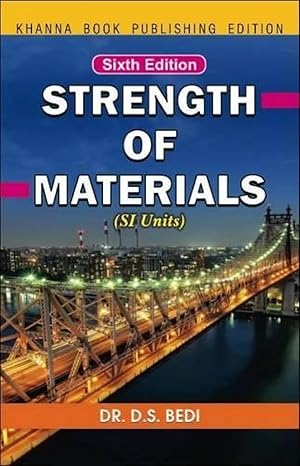Strength of Materials
Availability :
In Stock
₹ 328.50
M.R.P.:₹ 450
You
Save: ₹121.50 (27.00% OFF)
(Inclusive
of all taxes)
Delivery:
₹ 30.00 Delivery charge
Author:
D.S. Bedi
Publisher:
Khanna Publishing
Edition:
6th edition
ISBN-10:
9382609113
ISBN-13:
9789382609117
Publishing Year:
2022
No. of Pages:
752
Weight:
841 grms
Language:
English
Book Binding:
Paperback











